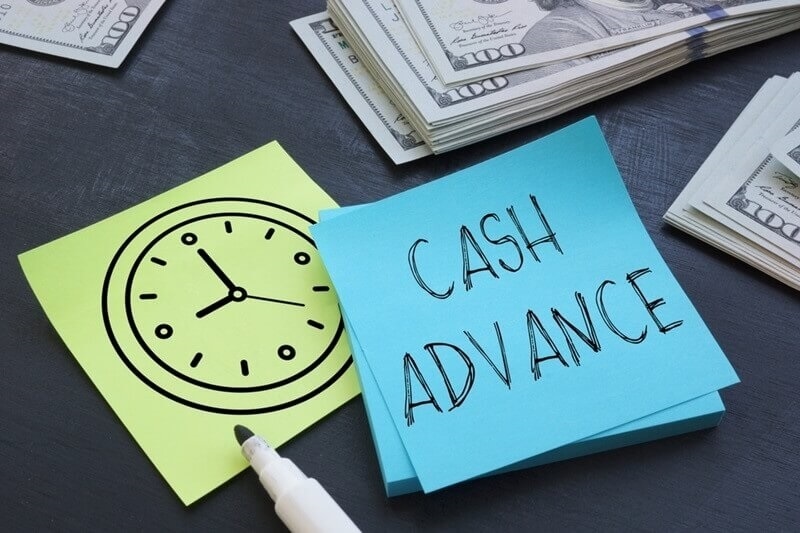
When the unanticipated comes in the way of bills, the typical American turns to rapid sources to obtain money. A medical bill, car repair, or payday loan until payday can catch you off guard. One of the first sources that people turn to is a cash advance. But before one does so, there is a need to understand exactly what it is, how it works, and the pitfalls in it.
In this guide, you’ll find cash advance basics explained step-by-step. We’ll walk through how cash advances work, what to expect with cash advance interest rates, when it makes sense to use them, and short-term loan tips for smarter financial decisions. You’ll also learn about quick borrowing options beyond cash advances, and how to prioritize borrowing safely in emergencies.
A cash advance is a temporary loan that is attached to your credit card. Instead of using your card to buy goods, you take money in cash form directly out of it, either from an automatic teller machine or from the issuer. It is a limited loan, but in cash.
The above are the fundamentals of cash advance described as follows:

A step-by-step approach is a good way to go for a better understanding of how cash advances work.
Requesting the Advance: At an ATM, you punch in your PIN and "cash advance." At a bank, you can request a teller withdrawal. Some issuers even offer online requests.
Fees: Most issuers charge a straight fee (e.g., $10) or a percentage of the loan value (usually 3–5%).
High Interest Rates: Cash advance rates are usually 20–30%, over your purchase APR.
Immediate Accrual: Interest is charged the day you borrow, unlike purchases.
Repayment Order: Payments you make usually go to lower-interest balances first. That leaves your cash advance hanging around on the books longer, and you pay more in interest.
That's why it is risky to take a cash advance if you do not have a strategy to repay it.
Let's crunch the numbers to see why this kind of credit can get out of hand so quickly.
If you borrow a $500 cash advance:
Fee: 5% of $500 = $25 upfront.
Rate: Say 25% APR.
No Grace Period: Interest is charged right away.
You will be charged more than $550 when you pay it back if you keep this balance for two months. That's due to both the fee and the stratospheric compounding interest daily. Knowing about this element of cash advance basics learned enables you to weigh the trade-off: fast access to cash versus cost.
Despite the price tag, cash advances are popular because they're convenient and quick.
Here’s a glimpse of it.
Here’s a glimpse of it.
Should you decide that a cash advance is your most desirable choice, you must approach it strategically. The following are short-term loan strategies to be cost-effective:
Borrow the Minimum You Can: Borrow only what you really need. This keeps charges and interest minimal.
Pay Back Early: Because there is no grace period, repaying your balance in days rather than months saves an enormous sum of money.
Don't Borrow Again and Again: Repeatedly taking cash advances has the possibility of leading to debt issues. Make them a very last resort only.
Read Your Agreement: Make the effort to know clearly what cash advance fees and interest charges you are paying in your credit card terms.
Plan a Repayment Strategy: Budget to clear the balance quickly instead of making minimum payments.
These short-term loan tips ensure you’re borrowing safely, not recklessly.
Cash advances aren’t the only way to access money in a pinch. Some quick borrowing options may come with lower costs.
Personal Loans: Offered by banks, credit unions, and online lenders. Often feature lower interest rates and fixed repayment terms.
Credit Union Payday Alternatives: All credit unions provide short-term loans on better terms than payday advances.
Borrowing Against Savings: If you possess a savings buffer, always borrow from it instead of paying sky-high fees.
Boss-Sponsored Advances: Certain firms provide payroll advances as a staff benefit.
Peer-to-Peer Lending Programs: Websites that facilitate small, short-term lending between peers.
With these fast loan alternatives typically costing less than going for cash advances solo.
The first thing you need to keep in mind is to borrow wisely. A cash advance itself is not evil; the difference will be where you use the money.
This is how to borrow wisely:
Plan Before You Borrow: Borrow only if you know how you are going to pay it back.
Know the Terms: Read the fine print on how cash advances work and the precise fees.
Avoid Dependence: Cash advances are not a common lending practice.
Keep an Eye on Your Credit Health: Misuse will damage your ability to get more favorable types of credit down the road.
By prioritizing borrowing safely as the center of your focus, you can keep away from the most common traps.
Other people confuse cash advances and payday loans, but they are not one and the same.
Cash Advance: Borrowed against your credit card, with cash advance rates depending on your credit card company.
Payday Loan: A stand-alone loan from a lender, in some cases, to be repaid by your next payday. Payday loans have even higher fees and risks.
Both are easy sources of borrowing, but both must be borrowed sparingly after knowing their fees.
One of the most astute ways of dealing with cash advance terms set is to leave them as a last resort. Instead, utilize steps that reduce the need for high-cost borrowing.
Emergency Fund: Save as little as $20 from each paycheck to establish a buffer.
Credit Management: Paying in advance and careful use improves credit, making you eligible for lower interest on loans.
Budgeting Tools: Money apps and financial trackers enable you to budget for expenses prior to them becoming emergencies.
Negotiating with Service Providers: Landlords, utilities, or hospitals will be more willing to negotiate payment plans with you rather than requiring lump payments upfront in most cases.
These long-term habits reduce the utilization of cash advances and improve financial management.
Cash advances are one of the fastest sources of money when you need it most, yet at a very restrictive cost. With cash advance basics explained in your corner, you understand how cash advances function, why cash advance fees are higher than ordinary credit, and what temporary loan suggestions can limit the harm if you need one.
They should be used only as short-term emergency loans and not as a routine recourse. Through safe borrowing and improved money habits, you can end the cycle of costly debt and move towards good financial health.
This content was created by AI